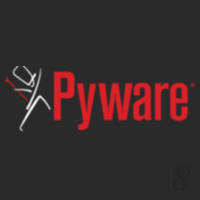
- #Pyware 3d will not run drivers
- #Pyware 3d will not run full
- #Pyware 3d will not run code
- #Pyware 3d will not run windows
This way of seeing things is both weak and wrong, first you have Quadcore if you didnt have a coreduo or a semi highend CPU you wouldnt say these things. I figure if it doesn't affect my computer's performance then by all means look fancy. I don't know why people get so worked up about fancy UI's.
#Pyware 3d will not run windows
It's funny the one's badmouthing it are the ones who use "classic" in windows XP. How is it shit? It doesn't affect resources at all and it looks really cool. The hard-coded limit was short-sighted with respect to today’s systems that have faster CPUs, multiple cores and Gigabit networks, and in addition to fixing the bug that affects throttling on multi-adapter systems, the networking team is actively working with the MMCSS team on a fix that allows for not so dramatically penalizing network traffic, while still delivering a glitch-resistant experience." "The throttling rate Vista uses was derived from experiments that reliably achieved glitch-resistant playback on systems with one CPU on 100Mb networks with high packet receive rates. So all Microsoft have to do is revise the limit, and as Mark says himself: The Task Manager screenshot below shows how the copy achieves a throughput of about 20%, but drops to around 6% on my 1Gb network after I start playing a song" I caused throttling to be visible on my laptop, which has three adapters, by copying a large file to it from another system and then starting WMP and playing a song. 6000 packets per second equals 9MB/s, a limit that’s visible even on 100Mb networks. If you have a system with both wireless and wired adapters, for instance, NDIS will process at most 8000 packets per second, and with three adapters it will process a maximum of 6000 packets per second.

#Pyware 3d will not run code
"However, if you have a 1Gb network infrastructure and both the sending system and your Vista receiving system have 1Gb network adapters, you’ll see throughput drop to roughly 15%.įurther, there’s an unfortunate bug in the NDIS throttling code that magnifies throttling if you have multiple NICs. Now the reason this issue is even coming up at all is because this hard-coded packet limit doesn't work so well for ethernet networks, and there's another nasty bug that makes the situation a lot worse: On the other hand, you do notice glitches in media playback, making the tradeoff a sensible one. So it doesn't seem like there is any perceptible loss in network performance.

100Mb networks can handle at most 12MB/s, so if your system is on a 100Mb network, you typically won’t see any slowdown."
#Pyware 3d will not run drivers
It does so by issuing a command to the NDIS device driver, which is the driver that gives packets received by network adapter drivers to the TCP/IP driver, that causes NDIS to “indicate”, or pass along, at most 10 packets per millisecond (10,000 packets per second).īecause the standard Ethernet frame size is about 1500 bytes, a limit of 10,000 packets per second equals a maximum throughput of roughly 15MB/s. "MMCSS’ glitch-resistant mechanisms were therefore extended to include throttling of network activity. So this would be a failure in the OS design if they can't make a relatively modern computer perform both tasks well at the same time.Īnd who's to say Vista can't "perform both tasks well at the same time"? As Mark Russinovich of Microsoft now writes in his blog, to clarify the situation:
#Pyware 3d will not run full
Many operating systems have IO schedulers that cope well with these situations, letting you transfer files over a network at full 100 mbps speed while playing music, without you noticing anything wrong.


I don't think it's a reasonable tradeoff.


 0 kommentar(er)
0 kommentar(er)
